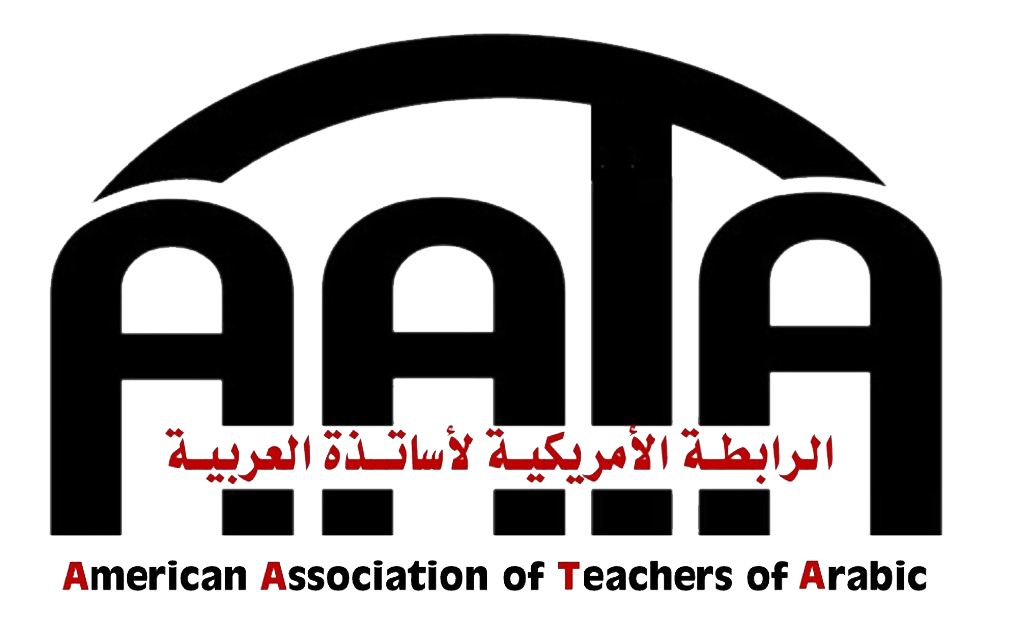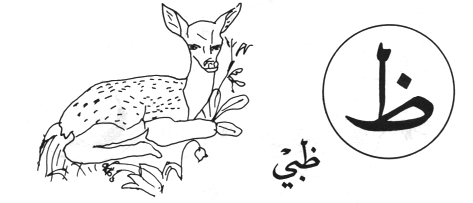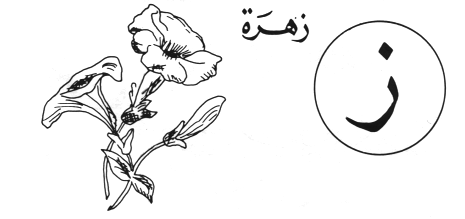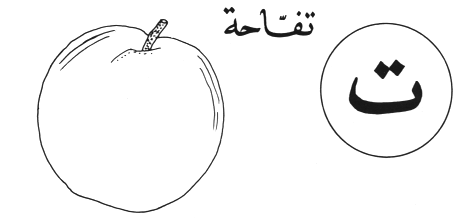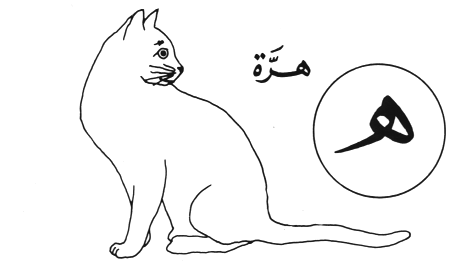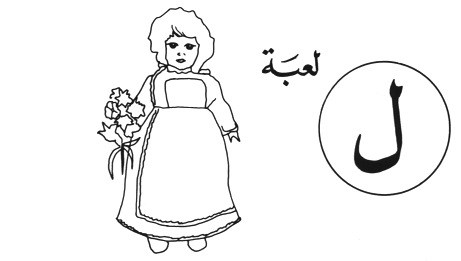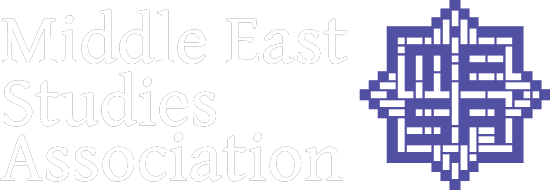|
IntroductionArabic is the language of a rich culture and civilization dating back many centuries; it was the language of Muhammad, the Messenger of God and Prophet of Islam, and the Qur'an. It has produced such figures as Averroes, the medieval Aristotelian philosopher; Ibn Khaldun, the first social historian; and Khalil Jibran. Between the eighth and the fifteenth centuries, the volume of literary, scholarly and scientific book production in Arabic and the level of urban literacy among readers of Arabic were the highest the word had ever known to that time. Islamic artists have used Arabic script as their principal art form for centuries; the beauty of their work will be revealed to you through the study of Arabic. Arabic is spoken by over 350 million people, in an area extending from the Arabian Gulf in the east to the Atlantic Ocean in the west. It is the language of Islam, and around 1.9 billion people use it as a vital spiritual component of their daily lives. Arabic is also spoken by many of the 3.5 million people of Arab origin living in the United States and Canada . This is a challenging, but very rewarding language to learn and understand for professional reasons, academic scholarship, and in order to enjoy a rich cultural exchange with a large population of the world. 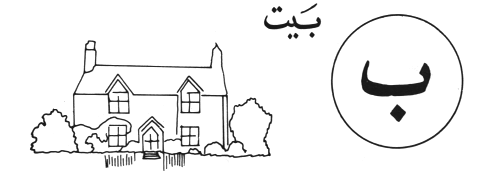 History
"Arabic belongs to the language-family commonly called Semitic. Other principal members of the family are Ugaritic and Accadian (both now long dead), Aramaic (surviving only in vestigial form), Hebrew, and the Semitic languages of Ethiopia ( Tigre , Tigrina, Amharic, and the church language Geez). In the north and center of the Arabian peninsula , a range of inscriptions datable from roughly the fifth century B.C. to the fifth century A.D. exhibit a group of dialects which are probably the ancestors of Arabic as we know it, although they cannot be termed Arabic any more than Anglo-Saxon could be termed English. The dialects of pre-Islamic South Arabia are a separate language within the Semitic family, and not in any sense ancestors of Arabic.
"The earliest manifestation of a linguistic form which can be identified as Arabic is on a tombstone at Nemara in the Syrian desert , dated A.D. 328, and one or two similar inscriptions from the fifth-sixth century. Round about A.D. 600 there were current in Arabia a number of dialects, roughly classifiable in to an eastern and a western group; our information about these dialects is confined to a number of scattered and unorganized remarks by later Muslim philologists. The course of the sixth century, however, had seen the production of a corpus of poetry, preserved initially by oral transmission, and only written down for the first time in the eight-ninth century; the linguistic status of this poetic corpus is very debatable, but a frequently accepted hypothesis is that it represents a sort of koine or common language used for poetry (and probably for 'elevated' diction in general) throughout the peninsula, and not completely identifiable with any one dialect as used for the purposes of everyday life, though on the whole its main features appear to be eastern rather than western. "In the early years of the seventh century the Qur'an, Islam's sacred book, was revealed to the Prophet Muhammad. The revelations were memorized by his followers and also written down by amanuenses; the Qur'an is therefore the earliest surviving document of written Arabic, apart from the few inscriptions which have been mentioned above. Its language is unmistakably that of the poetic corpus of the sixth century. Nevertheless, it was first written down in a form reflecting the pronunciation of the western dialect of Mecca , and it was not until nearly a century later that the scholars of the Lower Iraq succeeded in imposing on the pronunciation used for its recitation certain features characteristic of the eastern dialects. This they did, not by altering the primitive written text but by adding reading marks to it, a process which has resulted in some of the oddities of Arabic script as used at the present day. "From the early years of Islam we possess a number of written documents, both of a formal kind (inscriptions, tombstones, coins, etc.) and of an informal kind such as letters and contracts. The former evidently aim at being written in Quranic language, the latter often show divergences from it attributable to dialectal influences. Poetic literature continued to be produced and transmitted orally in the same manner as it had been before the advent of Islam. And the vast body of traditions relative to the life and sayings of the Prophet constitute the beginning of a prose literature." (Beeston, A.F.L. 1970. The Arabic Language Today. London : Hutchinson & Co., 12-14)
Why study Arabic?The United Nations adopted Arabic as one of its six official languages in 1974. In addition to the Palestinians, the governments of nineteen countries list Arabic as their dominant mode of expression. Arabic is also an important language in many other countries of the world. Events in the Middle East affect our daily lives, and only through the study of Arabic can one gain necessary insights into the cultural, religious, and political forces which motivate the inhabitants of that vital region--insights that our monolingual media seldom provide. The Middle East is also the birthplace of civilization and the cradle of the three monotheistic religions. It contains also, some of the world's greatest archeological and religious sites. It is the locus of two thirds of the world's known oil reserves. Moreover, it is just rich with interesting cultures and warm, hospitable people. A good knowledge of Arabic will greatly enhance the enjoyment of your travels there and your ability to work and interact effectively with Arabic speaking people. The diligent study of Arabic can lead to exciting careers in various fields. The following are only a few of the many positions open to the Arabic speaker. Communications : foreign correspondent, reporter, translator. International finance : international banker, international consultant, political risk analyst. Industry : manager of government relations for oil companies, market analyst for export companies. Government : foreign service officer, development program officer, intelligence analyst, government relations specialist, translator or interpreter. Law: contractual and corporative consultant. Academia : teaching and research positions; the U.S. government currently considers Arabic a critical language and many scholarships are available.
Colloquial and Standard ArabicAmiyya and Fusha (pronounced fus-Ha) "There are some twenty-one independent Arab nations, occupying a vast expanse of land from Morocco in the west to Oman in the east, and from the borders of Turkey in the north to Sudan and the Sahara in the south. The total population of these Arabic-speaking countries is about 183 million. The vast majority of Arabs are Muslims (meaning literally 'one who surrenders himself') and profess Islam ('self surrender'). The Muslim holy book is the Qur'an (sometimes spelt Koran in the west), written in Arabic, which was revealed to Muhammad, Islam's prophet, in the early 7th century AD. In some Arab countries of the Near East such as Lebanon , Syria , Jordan , and Egypt in particular, there are sizable Christian minorities. "Arabic is a member of the Semitic group of languages, closely related to Hebrew and Aramaic, the language Christ spoke. There is a considerable difference between written Arabic (variously known as Literary Arabic, Modern Standard Arabic, or in its historical form Classical Arabic) and all varieties of spoken Arabic. Spoken Arabic differs from country to country and even from town to town, although it is possible to group the dialects into a few major areas within each of which there is virtually total mutual comprehension. Thus the spoken Arabic dialects of north-west Africa (Morocco, Algeria, Tunisia) form a single group, as do those of the Levant (Lebanon, Syria, Jordan). Egyptian, Sudanese, and western Saudi Arabian Arabic form another group, as do the dialects of Iraq and the eastern part of the Arabian peninsula . However, even the differences between these groups of dialects are not that great: they all share a great many structural features and there is a high proportion of shared vocabulary. None of the spoken dialects, however, is used more than very marginally in writing: for all formal written communication (and obviously therefore, all literature), Modern Standard Arabic is universally used. It is also usually used in formal oral contexts, such as radio and TV news reading, political speeches, lectures, etc. This form of Arabic (which is learned at school and not as a native language by any Arab) is virtually uniform in its grammar and vocabulary throughout the Arab world. It is a potent symbol of Arab cultural and (in the sense that it is the language of the Qur'an) religious unity. "To many Arabs, Modern Standard Arabic, known as al-fuSHa 'the pure' is the only form of the language which has any worth. The dialects, although they are the universal means of everyday conversation, are regarded by many as degraded forms of the language. This feeling is often reflected in attitudes to foreigners' attempts to learn Arabic: many Arabs, especially if they are educated) feel that only the Standard form of the language should be taught, regardless of the fact that Arabs themselves would never themselves use this kind of Arabic for some of the purposes (e.g. chatting, shopping) for which they insist foreigners should use it. It can sometimes seem an uphill battle for foreigners to get Arabs to talk to them in colloquial Arabic. But don't be put off; the less well educated seem to suffer less from this prejudice, and you may well find that they will be more than willing to help you practice." (Holes, Clive and Nadira Auty and Rachael Harris. 1995. Just Listen 'n Learn Arabic . Lincolnwood: Passport Books, 60-61) "Modern Standard Arabic (MSA) is the formal Arabic which is written and spoken in the contemporary Arab world. In its written form, it is used almost exclusively in any printed publication anywhere in the world today; as such it is the direct descendent of the Arabic of the Koran, the poetry of Pre-Islamic Arabia, and the classical literature of the Golden Age, the major differences being in lexicon and style. It is also an oral medium of expression used in formal situations ranging from a radio newscast to a lecture or other formal address to an international conference. Used orally it may be modified in varying degrees, depending on such factors as the nature of the occasion, the makeup of the audience, the speaker's control of MSA, etc. MSA is a universal form of Arabic leaned in schools across the Arab world; it is opposed to dialectal or colloquial Arabic, of which there is a particular variety for each community and differs according to region and such social factors as religion, socio-economic status, etc. The dialects are used for all non-formal situations- at home, at work, social occasions, etc. --all the usual day to day activities. "The Arab does not keep MSA and his own dialect separate, but mixes them according to the degree of technical complexity of his subject, the degree of formality of the occasion, etc. When speaking his dialect, he will bring in MSA in varying degree, and when speaking MSA, he may introduce colloquialisms into it if it does not impair understanding on the part of the listener." (Abboud, Peter and Ernest Abdel-Massih, Salih Altoma, Wallace Erwin, Ernest McCarus, and Raji Rammuny. Elementary Modern Standard Arabic . Ann Arbor : University of Michigan Press , introduction.)
The Arabic AlphabetAt first and probably tenth glance, the Arabic alphabet looks incredibly intricate and complicated and maybe even impossible to learn. It is however, just as simple as the English alphabet and takes approximately half an hour to learn well. There are only 28 letters and most of them correspond to sounds in the English alphabet. Only three letters are what we would call vowels, and the rest are consonants. Arabs love to embellish their letters which make them seem very complicated, but if you can wade through the decoration, the underlying letters are really quite simple to understand.
Arabic Greetings"Greetings and leave takings are indispensable ingredients in any Arabic conversation, wherever you are in the Arab world. They tend to be more elaborate than we are used to in the West. Even when addressing a person you have never met before (say at a reception desk when requesting information, or when getting into a taxi), it is customary to greet him/her and take your leave using standard polite expressions. "As in the West, greetings can be relatively formal or informal, depending on the occasion and the relationship between the speakers. Perhaps the most formal greeting, used throughout the Arabic speaking (and indeed Islamic) world, is the traditional one of the desert Arab: is-salaam 9aleekum (peace be upon you). The invariable response to this is: wa 9aleekum is-salaam (and upon you be peace!). While this is definitely formal sounding, it is perfectly acceptable and 'safe' to use this on all occasions. It is always the person arriving, the 'newcomer' in the situation who initiates the greeting. "In most circumstances in which you will find your self, however, it is just as acceptable, and somewhat less 'stiff,' to greet the other person with a more informal expression, such as: marHaba (welcome). This can be said both by the person initiating the greeting and by the person replying. In reply to marHaba , it is also common to say marHabteen (two welcomes!). Another common opening, especially when ushering someone into your house or office, letting them into your car, etc. is: ahlan wa sahlan , which roughly means 'welcome among friends!' There are a number of possible replies to this: simply ahlan (welcome), or ahlan biik (welcome to you), or ahleen (two welcomes), or yaa hala (oh, welcome!). "It is normal when meeting someone socially for the first time, and when meeting anyone you already know (even if you just bump into them in the street), to follow the initial expression of greeting by asking after their health. There are many expressions for this which vary from one Arab country to another, but the commonest and most widely used is keef il-Haal or keef Haalak ( Haalik for a woman), which means 'How are you?' (literally how is your state?). The commonest, most all-purpose reply is il-Hamdulillaah (praise be to God!), but many others are possible e.g. (in Jordan , Syria , and Egypt ) kwayyis (fine!) and (in the Maghrib) labas (fine). "When taking their leave, the commonest expression people use is ma9a s-salaama (go in safety). This can also be used as a reply by the person staying. It is also possible for the person leaving to use the same phrase as is used in greeting i.e. is-salaam 9aleekum. " (Holes, Clive and Nadira Auty and Rachael Harris. 1995. Just Listen 'n Learn Arabic . Lincolnwood: Passport Books, 60-61)
|
PROMOTING LANGUAGE & STUDYAmerican Association of Teachers of Arabic (AATA) aims to facilitate communication and cooperation between teachers of Arabic and to promote study, criticism, research and instruction in the field of Arabic language pedagogy, Arabic linguistics and Arabic literature. |
